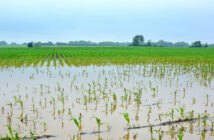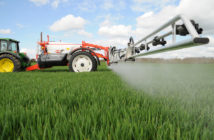With more land going into spring cereals following the dreadful autumn, it is an opportunity to reduce grass weed populations. But careful management is needed to maximise control to get the benefit. Here are six pointers to good grass weed control in spring crops.
- An opportunity to control weeds. A decent spring crop is better than a poorly established winter crop for weed control. Many farmers made the sensible decision of not drilling in sodden fields in autumn. A poor winter crop is likely to be rife with weed problems and needs significant spend across the crop protection programme to bring it to harvest.
- Consistent germination. Consistent germination and a fast get away is critical for spring crops to outcompete weeds. Soils specialist Philip Wright recommends that farmers focus on drill choice and set up to ensure there is good seed to soil contact. Smearing caused by discs and compaction caused by tyres at higher than optimal ground pressures on wet soils can both harm spring crop establishment.
- Crops can start solving soil problems. Sorting out compaction issues is already on many farmers’ priority list for later this year, but the roots of a spring crop will start doing some of the work beforehand. Less compaction will help with autumn cultivations to control black-grass.
- Focus on seedbed quality. Bayer’s Darren Adkins recommends farmers to be patient and create a good seedbed ahead of drilling. “You need to be patient to create a decent seedbed for the crops to establish properly. The seedbed will also help with the performance of pre-emergence herbicides and ensure effective control.”
- Up seed rates. Lower tillering in spring crops mean they are vulnerable to weed problems until the canopy closes. Use higher seed rates to compensate and outcompete weeds.
Herbicides will be important. Once conditions warm up both crops and weeds will develop quickly. Residual herbicides will give crops a head start over weeds. “Liberator (flufenacet + diflufenican) now has approval for use in spring wheat and spring barley. Look to get it on early at the true pre-emergence timing,” says Mr Adkins.




